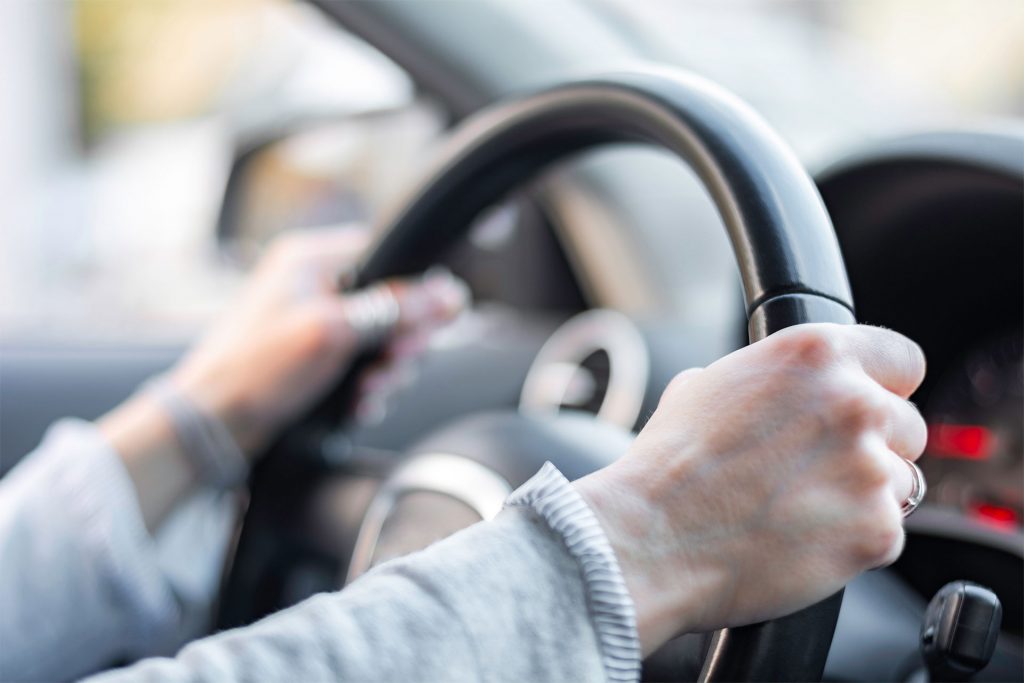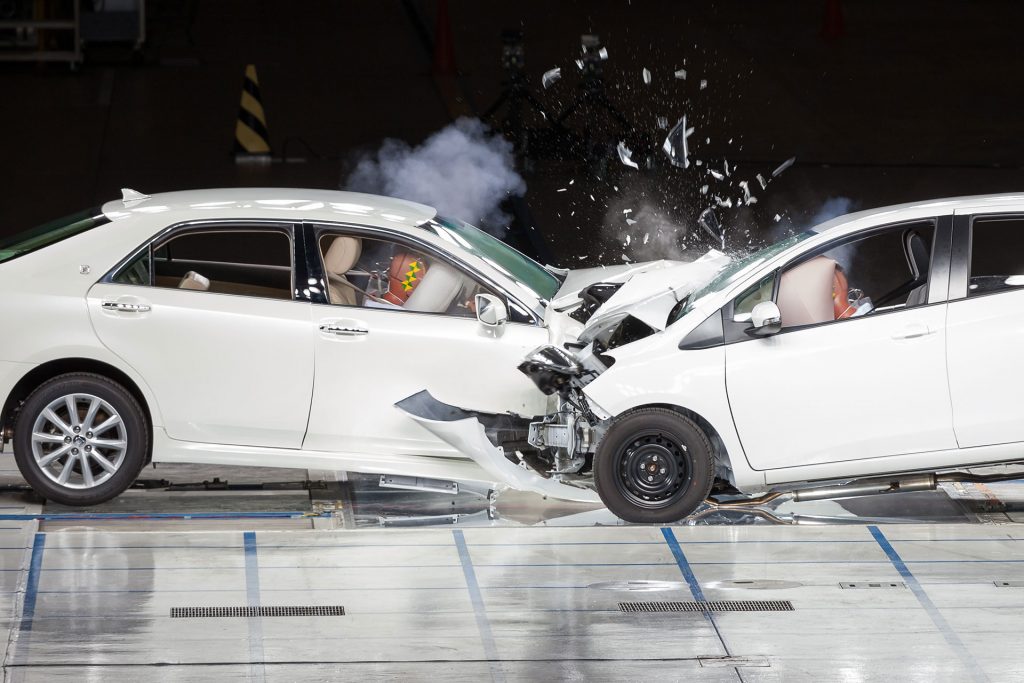The Difference Between the Characteristics of Good and Bad Drivers
On every road, some drivers will be skillful and reliable, while others will put themselves and others in danger through recklessness or lack of ability. Many factors contribute towards people’s level of skill behind the wheel, and these influences can change over time, making drivers either better or worse. Operating a vehicle is a complicated task, but with lifelong learning, people can develop the characteristics of a good driver while ridding themselves of bad habits.

Hands on a Steering Wheel–Shutterstock
People’s skills behind the wheel can vary from day to day, but both good and bad drivers tend to have certain characteristics and habits that stay with them throughout life. Knowing the difference between good and bad drivers can help people develop the skills that help to keep everyone safe on the road. When drivers know what they have done wrong, they can more easily correct their mistakes and change their habits.
Behaviours of Bad Drivers
Personal characteristics are among the major factors in a driver’s natural ability to deal with the challenges of driving, but they do not need to be defining factors. As the Park.ca website notes, bad drivers tend to be reactionary, responding aggressively when they see bad behaviour rather than remaining calm. They are also frequently competitive, trying to out-maneuvre other drivers, just to get ahead. They might save a bit of time, but that often comes at the cost of other road users’ comfort and safety.
An example of these types of behaviour is described in a January 2020 Driving.ca article. In a Toronto neighbourhood, drivers attempting to avoid traffic delays due to a light rail transit construction project were driving on the sidewalk on the wrong side of the road near a school, merely to save a few minutes on their commute.
Endangering pedestrians, especially schoolchildren who might not be aware of possible dangers on the road, can potentially be a deadly result of an impatient and reckless personality. Taking steps to mitigate the dangerous effects of this type of trait is important for everyone’s safety.
A third characteristic of bad drivers, according to the Park.ca website, is aggression. Closely related to reactionary and competitive driving, this characteristic tends to lead drivers to cut off other drivers, take unnecessary risks, and gesture angrily at other drivers, potentially cause road rage.

Head-on Collision–Shutterstock
High-risk driving resulting from aggression could include speeding in populated areas, changing lanes frequently, tailgating or other tactics. Aggressive characteristics can make drivers careless while potentially causing others to lose their confidence or become angry. Small problems can escalate and become large ones if drivers are aggressive on the road. Being in charge of a large and possibly lethal machine means that aggression can be deadly.
Besides all of these characteristics, bad drivers tend to be easily distracted. Whether the distractions come from what they see outside the vehicle or an inside distraction such as talking with passengers or adjusting the radio, many things can take a driver’s attention away from the task of driving. While even the best drivers can be distracted at times, bad drivers tend to have even more trouble concentrating than most people.
According to the Ontario.ca website, road deaths due to distracted driving have doubled since the year 2000. Statistics from 2013 indicate at least one injury due to distracted driving every half hour in the province. Some distractions are worse than others. Talking on the phone while driving, for example, is four times as likely as any other distraction to cause an accident. Although safe driving involves surveying the vehicle’s surroundings for possible hazards, a distraction takes the driver’s attention away from the task at hand.
Characteristics of Good Drivers
In contrast, good drivers have characteristics that help them to concentrate on the task of operating a vehicle safely. The Traffic Counsel website gives ten qualities of a good driver which can help people avoid endangering other road users, whether they are in vehicles, on bicycles or on foot. These characteristics might come more naturally to some drivers than to others, but they are qualities that everyone can try to develop.
One important point that people should consider before ever getting behind the wheel is fitness for the task. Drivers who are under the influence of drugs or alcohol or who are just fatigued, sick or otherwise not physically or mentally capable of operating a vehicle safely should avoid driving until they are able to do so safely. Good drivers know when they are capable of operating a vehicle safely and when they should leave the task to others.
The vehicle’s fitness for driving is also an important consideration. Faulty brakes, broken lights and other factors can affect how well the vehicle operates, regardless of the driver’s skills. Proper maintenance of vehicles can help keep drivers and other road users safe. When drivers also have a basic mechanical knowledge of their vehicles, they can more easily detect problems before they become serious.
Developing Good Habits
Skill and knowledge are two more characteristics that good drivers should have. All drivers should know how to operate a vehicle, including tasks such as signalling, changing lanes, and turning. They should also have the skills to be able to perform these tasks while staying in the correct lane, watching for traffic, finding their route and generally being a safe and reliable driver on the road.
While student drivers can gain much of the knowledge they need through classes at a driving school, skills often take much longer to develop, especially when drivers need to deal with seasonal changes that affect road conditions. Part of the process is also knowing how a particular vehicle works and gaining the skills for dealing with its quirks. Lifelong learning is an essential part of being a good driver.
Self-discipline is another quality of a good driver. This attribute can involve many different aspects, such as planning ahead to avoid rushing to a destination at the last minute, controlling the vehicle’s speed on the road, slowing down and stopping as a light is about to turn red rather than going through at the last moment, and otherwise making decisions that can make the trip longer but that contribute to a safer ride.
Patience is closely related to self-discipline. Being patient gives drivers the ability to assess the situation on the road around them and make the best decisions they can. Aggressive drivers tend to weave in and out of traffic, making it difficult for others to know what they intend to do. They frequently honk at other road users, possibly startling them into making mistakes. Patience, however, allows drivers to cooperate with other road users and to make good decisions calmly.
Part of making good decisions is staying alert. Being aware of potential dangers is essential to being able to respond promptly and appropriately to situations on the road. Alertness involves both the physical and mental fitness to drive and the ability to concentrate on the task at hand. Drowsiness, distractions or even the actions of other drivers can all affect safety, and drivers need to be alert to what is around them.
Taking Responsibility
All of these qualities are part of being a responsible driver. Vehicles are large machines that can easily injure or kill people on the road. Following the rules is important for ensuring that others can predict what a driver will do. However, it is equally important to be responsible about what happens inside the vehicle. Before starting out, drivers should ensure that any objects in the vehicle are secured so that they will not fly around the cabin in case of a sudden stop.
Passengers are also part of the driver’s responsibility. Although adult passengers should know enough to wear seat belts, younger riders might not realize the importance of strapping themselves in. When infants, toddlers and other young children are in the vehicle, good drivers should also ensure that the children are in the correct type of carrier or booster seat for their age and size. If drivers take responsibility for their passengers, they can help to keep everyone safe.
Taking time to practise is important in being a good driver. This is especially important for new drivers as they are still learning to handle a vehicle on the road. However, skills can fade over the years if the driver fails to use them or gets into bad habits. Even the most experienced driver, after a period of months or years without being behind the wheel, is likely to need some time to recover important skills.
If possible, drivers should practise on a regular basis, even if they drive only occasionally. Being able to use both automatic and manual shift vehicles may be important in some cases, as well as driving large or small vehicles. Drivers should be sure to maintain whatever skills they will need on the road.
Possibly the most important characteristic that distinguishes a good driver from a bad one is the art of defensive driving, which the Park.ca website identifies as one of the top three characteristics of a good driver. Defensive driving involves anticipating potential hazards and responding appropriately, whether that involves slowing down on icy roads or staying away from an erratic driver. Defensive driving is a defining characteristic of a good driver.
All drivers make mistakes at times, but cultivating the characteristics of a good driver can help enhance the positive skills and mitigate bad habits. Once people know what to look for, they can become better drivers and encourage others to do the same.
